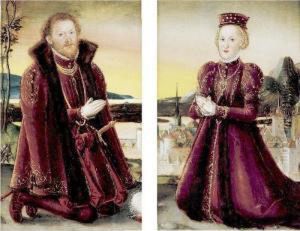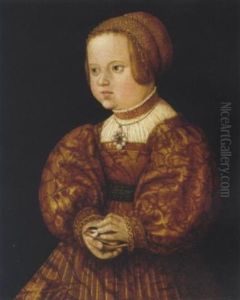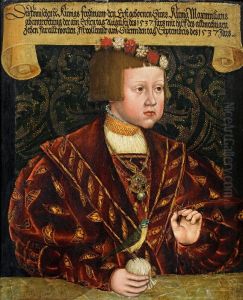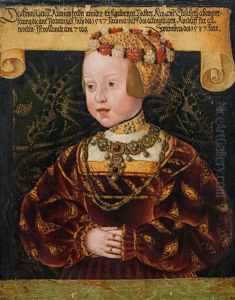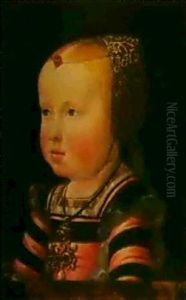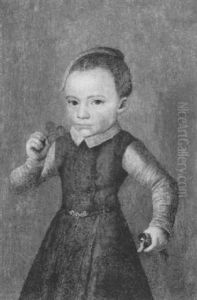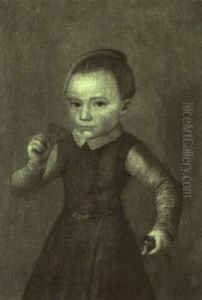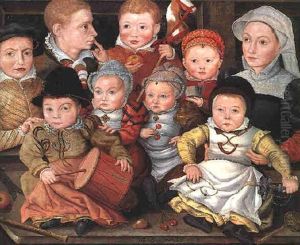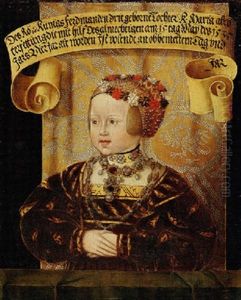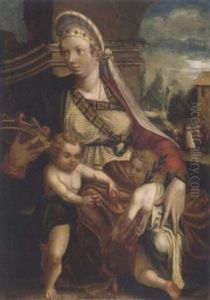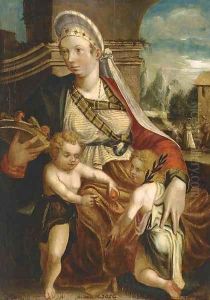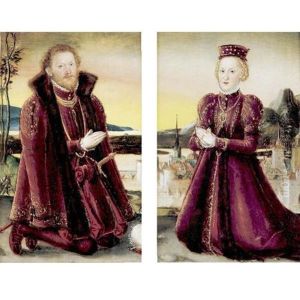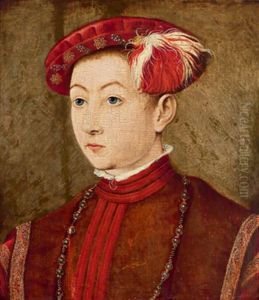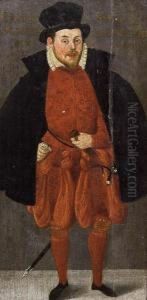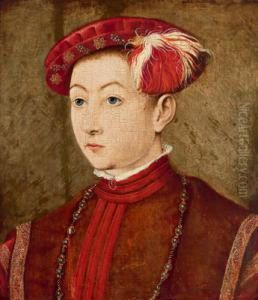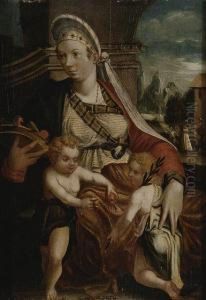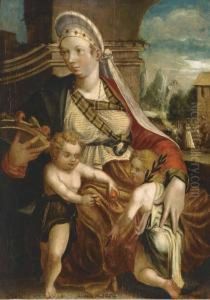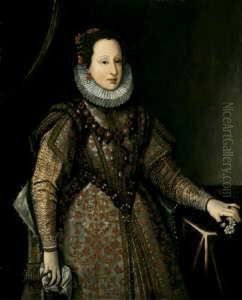Jakob Seisenegger Paintings
Jakob Seisenegger was an Austrian painter born in 1505 in the town of Horn, Lower Austria. He became one of the most prominent portrait painters of the Renaissance period in the German-speaking lands. Seisenegger's work is characterized by its meticulous detail, clarity, and reserved, formal presentation, which was typical of the Northern Renaissance style.
Seisenegger initially learned the art of painting from his father, who was also a painter. His early training set the foundation for his craft, but it was his later work and connections that established his reputation. By 1529, he had become a court painter to Holy Roman Emperor Ferdinand I, which marked the beginning of his ascendancy in the world of art.
During his time as a court painter, Seisenegger painted portraits of various members of the Habsburg family, including Emperor Charles V and his son, the future Philip II of Spain. These portraits were not only important records of the appearances of these figures but also served as tools of political and dynastic representation, projecting the power and dignity of the imperial family. His work is known for its attention to the intricate details of his subjects' clothing and jewels, which were often used to convey their wealth and status.
One of Seisenegger's most famous works is the portrait of Charles V with his hunting dog, which showcases the emperor in a more personal and informal light than was typically portrayed. This painting reflects the growing interest of the period in individual personality and the humanization of the sovereign.
Seisenegger's influence extended to other artists of the time, and his style was disseminated through his workshop and followers. Despite the prominence he achieved during his lifetime, Seisenegger's fame waned after his death in 1567, and for many years his works were attributed to other artists. It was only after art historical research in the 19th and 20th centuries that Seisenegger's contributions to Renaissance portraiture were fully recognized and appreciated once again.
Today, Jakob Seisenegger is considered an important figure in the history of European portrait painting, and his works are held in various museums and collections around the world, where they continue to be studied and admired for their historical significance and artistic merit.
